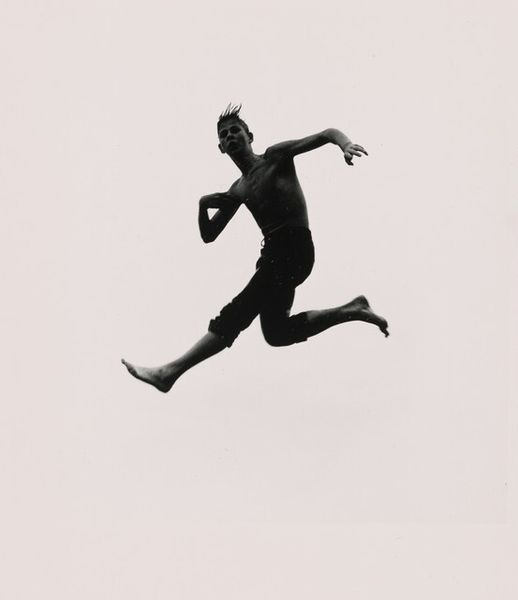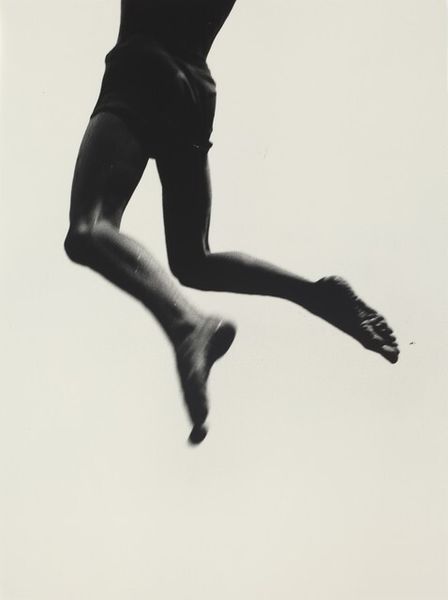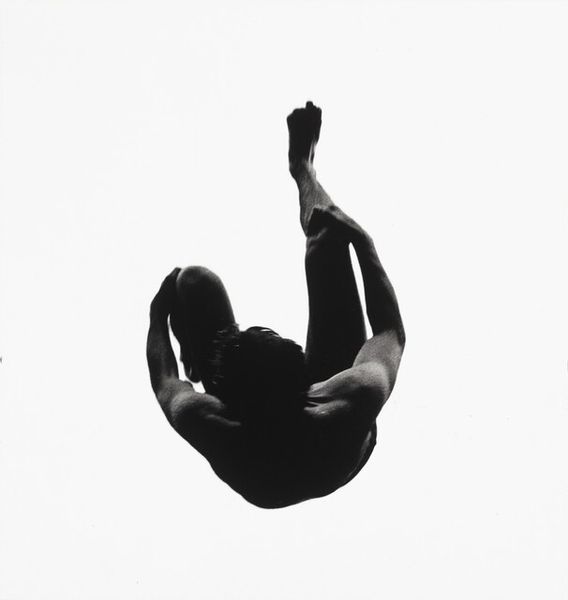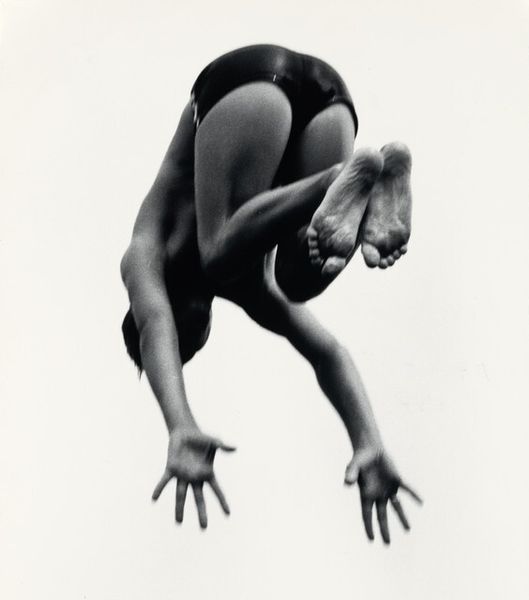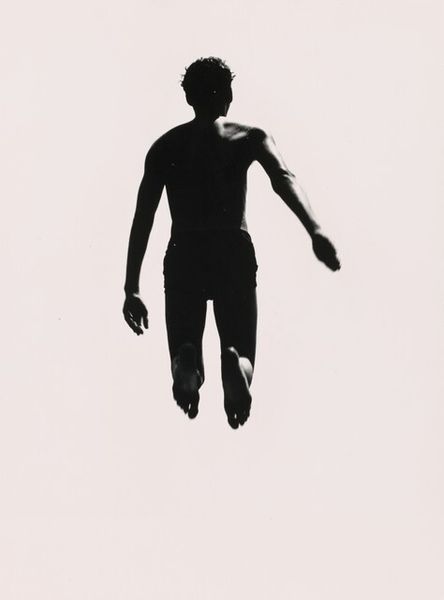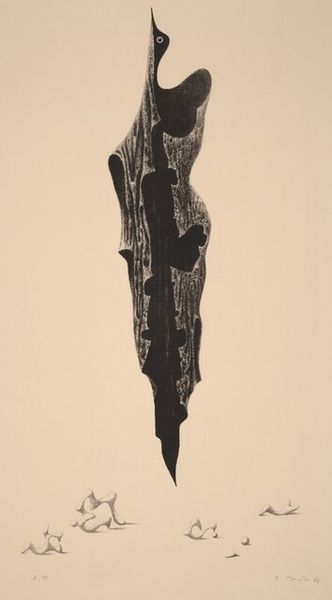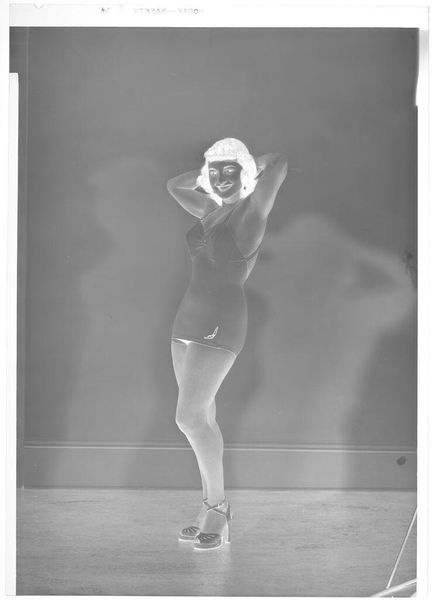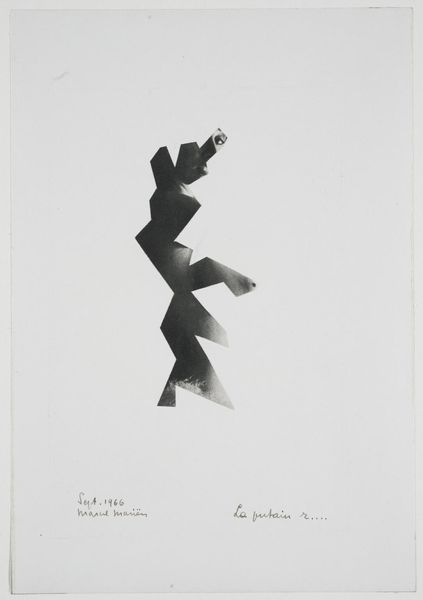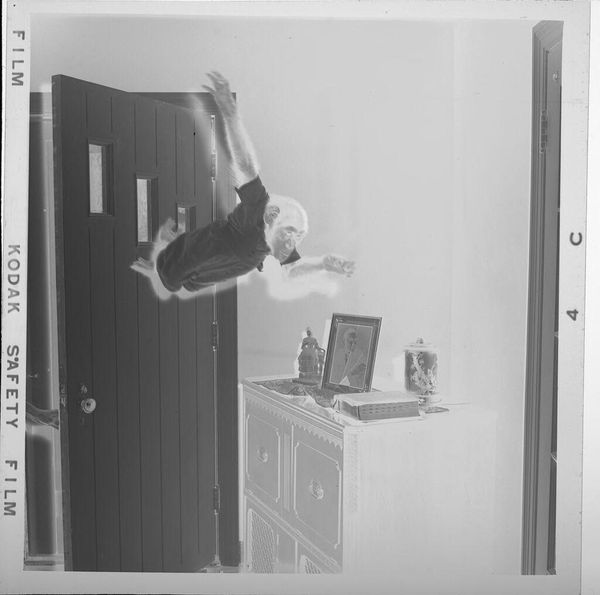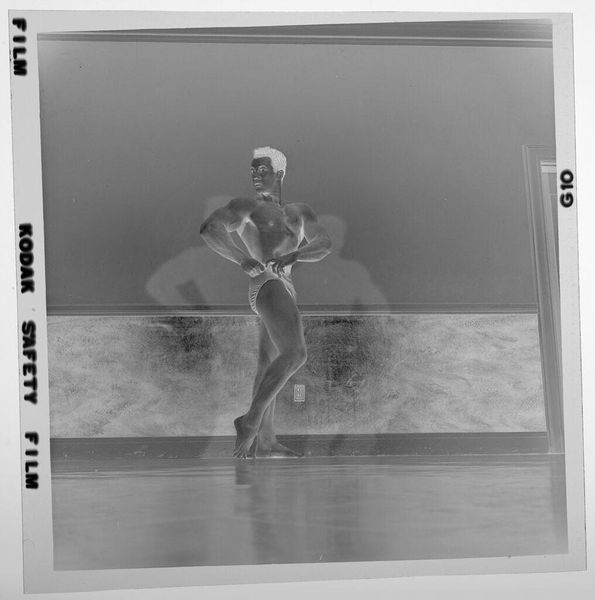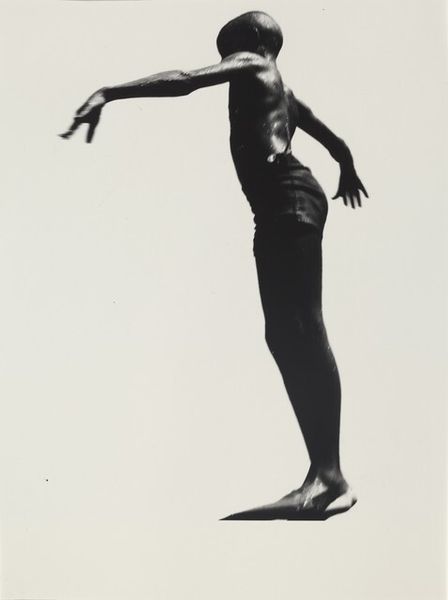
photography, gelatin-silver-print
#
abstract-expressionism
#
form
#
photography
#
black and white
#
gelatin-silver-print
#
abstraction
#
line
#
monochrome
#
monochrome
Dimensions: image: 25.1 × 25.1 cm (9 7/8 × 9 7/8 in.) sheet: 35.3 × 27.6 cm (13 7/8 × 10 7/8 in.)
Copyright: National Gallery of Art: CC0 1.0
Curator: Well, this gelatin silver print, titled “Pleasures and Terrors of Levitation #67,” was created by Aaron Siskind in 1956. It's a striking piece from his exploration of abstract expressionism through photography. Editor: It really is. My immediate response is one of tension, but also of the body’s amazing ability. The stark contrast makes it feel suspended, weightless. The bare limbs against that plain white background… it's compelling. Curator: Absolutely. Siskind was very interested in taking the familiar subject matter of the human form and using photographic techniques to bring out pure shape and tonal qualities. You can see his training; he began his career documenting social issues as a member of the New York Photo League, so social issues played a central role in the reception of the images. Editor: Right, but here, the social documentation seems absent, replaced with this emphasis on the raw physicality and dynamism. Look at the angle, the texture of the clothing against the smooth skin… What was the influence of equipment, technique and manufacturing? Did he develop this, print it himself, and how would this alter its context? Curator: A key consideration. Siskind embraced the darkroom as a studio. Cropping and high contrast were critical to isolating his subjects. The texture itself gives it that Abstract Expressionist feeling—transforming something physical into something more gestural and ephemeral. Editor: I'm also thinking about how the gallery space would've impacted the viewing. Its stark simplicity really highlights the human form and gives a lot to what is visible and implied of the culture of physique from the mid century period. The composition demands attention in any space. Curator: Yes, it asks viewers to consider both the real, the physical act captured and transformed through darkroom, and the possibilities of artistic creation. The labor and artistry is both within the scene of the work as well as in the actual work. Editor: The way we understand the social climate changes as museums curate these types of bodies of work too…it makes you wonder what impact this had in galleries upon its original display. Curator: Ultimately, it serves as an incredible example of how much material exploration photography makes in terms of both the photographic subject and artistic production. Editor: Precisely! Looking at it now offers us a chance to rethink social issues then and possibilities now, not just with images, but in relation to what the artistic intent represents overall.
Comments
No comments
Be the first to comment and join the conversation on the ultimate creative platform.
